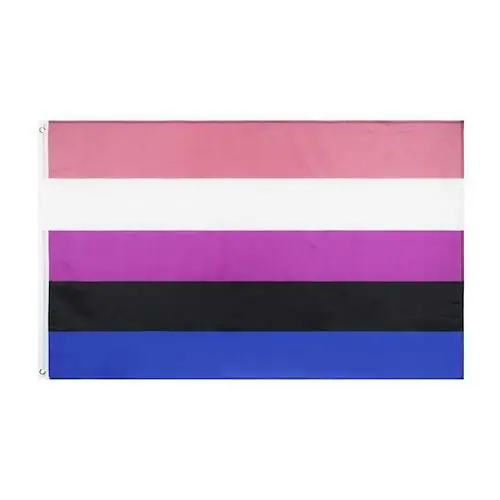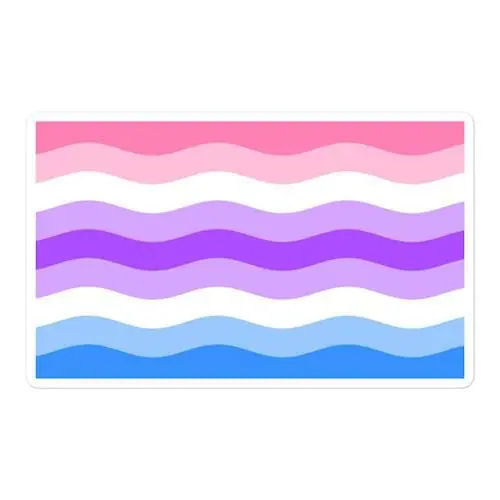While many of us are now familiar with the famous rainbow flag, there are also other LGBQT+ flags that each represent the different sex, sexuality, attraction, and gender diversities within our fabulous community.
Even if most queer people identify with the rainbow flag itself, many also desire to fly their own particular flag alongside it. Because, y’all, representation is crucial!
One such flag is the Genderfluid Pride Flag – a flag you might already have seen flown at any number of pride festivals around the world, from Stockholm to New York City…and everywhere in between!
Simply put, a genderfluid person is someone who does not identify themselves as having a fixed gender.
Genderfluid people experience gender fluctuations over time. For some genderfluid individuals, gender changes are arbitrary, while for some, they’re extreme. Gender fluctuations may happen slowly over a period of months or years, or they may happen fast in a matter of hours or days.
The Genderfluid Pride Flag was created in 2012 by JJ Poole(they/them), an agender pansexual from New York state who advocates for people who do not fit into heteronormative society. They designed it to encompass all gender identities, and as such, the genderfluid flag has five horizontal stripes and five colors. The colors are:
- Pink for femininity.
- Blue for masculinity.
- Purple for femininity and masculinity.
- Black for lack of gender.
- White for all genders.
In 2021, LGBTA wiki user FruitIndividual designed an alternate genderfluid flag that represented the fluidity and change experienced by persons with this identity in the wave pattern of lines. It is quickly catching on and may soon be the preferred genderfluid flag.
White symbolizes ambiguous and/or non-binary identities, whereas lighter blue represents masculine identities, pink represents feminine identities, purple represents a combination of masculine and feminine identities, and purple represents a blend of masculine and feminine identities. The fluidity and change experienced by persons with this identity are represented by the wave pattern of the lines.
Simply put, a genderfluid person is someone who does not identify themselves as having a fixed gender.
Genderfluid people experience gender fluctuations over time. For some genderfluid individuals, gender changes are arbitrary, while for some, they’re extreme. Gender fluctuations may happen slowly over a period of months or years, or they may happen fast in a matter of hours or days.
The Genderfluid Pride Flag was created in 2012 by JJ Poole(they/them), an agender pansexual from New York state who advocates for people who do not fit into heteronormative society. They designed it to encompass all gender identities, and as such, the genderfluid flag has five horizontal stripes and five colors. The colors are:
- Pink for femininity.
- Blue for masculinity.
- Purple for femininity and masculinity.
- Black for lack of gender.
- White for all genders.
In 2021, LGBTA wiki user FruitIndividual designed an alternate genderfluid flag that represented the fluidity and change experienced by persons with this identity in the wave pattern of lines. It is quickly catching on and may soon be the preferred genderfluid flag.
White symbolizes ambiguous and/or non-binary identities, whereas lighter blue represents masculine identities, pink represents feminine identities, purple represents a combination of masculine and feminine identities, and purple represents a blend of masculine and feminine identities. The fluidity and change experienced by persons with this identity are represented by the wave pattern of the lines.





